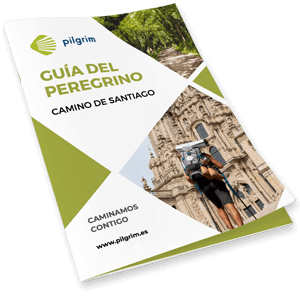Comillas
‹ Back to the stage
Comillas
- Residents: 2.320 aprox.
- Province: Cantabria
Information
Get to know Comillas
This small coastal town is located halfway between San Vicente and Santillana del Mar, an essential triangle to be visited. In addition this was the one that gave its name to the Pontifical University of Comillas, long before being moved to Madrid.
At present the old buildings of the University are those that give modernist character to the village of Comillas.
<pLocation
How to get there
Several companies offer bus lines that run from San Vicente to Santander and vice versa, with all the towns in between being connected daily, including Comillas.
Comillas can also be reached by car thanks to the two national roads CA-131 and CA-135, the latter if you come by the A-8 freeway is the one you should take to access the village.
It is possible to get to Comillas by train although it does not have very good lines if there are some, for example the line that connects Reinosa with Comillas.
History / Culture
What to see
Edificios y jardines de la Universidad Pontificia
The Pontifical University of Comillas is composed of a set of two bodies built between 1883-1964 and divided, in its center, by a grandiose church. These bodies in which the different rooms and dependencies are organized, are distributed around two inner courtyards.
It is worth noting its open facades with only small ogival openings and built with brick and stone masonry. From its interior stand out the bronze doors, the roof of the building and different sculptural and pictorial works of artists Llimona, Llorens and Tamburini and especially the entrance to the enclosure that has a papal coat of arms.

El capricho de Gaudí
El Capricho de Gaudí was built in the late nineteenth century by order of Máximo Díaz de Quijano, is considered one of the first works of style property of the hand of Antonio Gaudí.
It can be found next to the Palacio de Sobrellano and stands out for the materials used in its construction: brick and stone, as well as for its decoration based on ceramics with plant motifs.
HOURS
From 1 November to 28 February Monday to Sunday from 10:30 to 17:30From 1 March to 30 June and from 1 to 30 October Monday to Sunday from 10:30 to 20:00From 1 July to 30 September Monday to Sunday from 10:30 to 21:00
From 1 July to 30 September Monday to Sunday from 10:30 to 21:00
The museum is open from 10:30 to 21:00.
Fees
General admission (>14 years old) 5€Child admission (7-14 years old) or people with disabilities and accreditation card 2,5€Free admission for children under 7 years old
INFORMATION OF INTEREST
Web: www.elcaprichodegaudi.comE-mail: visitas@elcaprichodegaudi.comTeléfono: 942 720 365

Torre de la Vega
The Torre de la Vega was built in the early 14th century in the Gothic style by Garcilaso I de la Vega with the aim of making the port of Comillas more visible to those approaching it. Since its construction it has undergone numerous subsequent alterations.
Since its construction it has undergone numerous subsequent alterations.

Parque Güell y Martos
Güell y Martos Park is the most important public park in the town of Comillas, designed by Lluís Doménech i Montaner. In it there are several historically important buildings, such as the cemetery and the Pontifical University, in addition we also find in it the monument in honor of the Marquis of Comillas.
<p
Fachada del cementerio
This is a cemetery declared of Cultural Interest thanks to its grandiose facade. This is formed by a semicircular arch covered by a gable roof.
The wrought iron entrance gate extends in the form of a stone wall topped by all kinds of pinnacles decorated with crosses. The mausoleums and tombs were designed by Domènech i Montaner and of all of them the most outstanding is that of the Piélagos family. The best known and most representative figure of the cemetery is the “Exterminating Angel” by Llimona.

Fuente de tres caños
The fountain of the Three Spouts, dating from the late nineteenth century, was erected in order to pay tribute to Don Joaquin del Piélago for his great economic donation that facilitated the bringing of water to the town.
It is the work of Domenech i Montaner and has a modernist character due to its extensive decoration with plant and floral motifs. Of which highlights the coiled dolphin located in the central spout of the column.

Iglesia de San Adrián
The church of San Adrián de Ruiseñada was built at the end of the 15th century with a single nave and a tower at the back. Of this temple highlights the western door thanks to its structure of classical type in pointed arch with archivolt supported on angled columns made of ashlars.
It also has a straight apse with a front window with openwork tracery and decorated corbels.

Iglesia de San Cristóbal
The Church of San Cristobal began to be built in the year 1648 after a discussion between the people and the parish priest in which the citizens decided to build a new church in this same place for which they would contribute their own money and work.
This temple of mountain baroque style took almost 200 years to be consecrated. It was the first church with these characteristics in the whole area.
MASS TIMETABLE
.Winter Weekdays and eves at 19:00 Holidays at 13:00Summer Weekdays and vespers at 20:00 Holidays at 13:00
INFORMATION OF INTEREST
Telephone: 942 720 216

Monumento al Marqués de Comillas
The Marquis of Comillas, named Antonio Lopez y Lopez, was Marquis of the town until 1878. From that year the population raised the monument in his name in the garden of the Park Güell.
The monument was built by Domenech and consists of a unique pedestal in the shape of a ship’s prow, the central column decorated with maritime themes and bronze statues with allegories of the Antilles and the Philippines.
<p
Palacio de Sobrellano
The grandiose Sobrellano Palace of neo-Gothic style with Venetian influence was built in 1888 by Joan Martorell, which stands out for housing numerous furniture owned by Antonio Gaudí and paintings by Eduardo Llorens.
The Palace of Sobrellano is a neo-Gothic style palace with Venetian influence was built in 1888 by Joan Martorell, which stands out for housing numerous furniture owned by Antonio Gaudí and paintings by Eduardo Llorens.
Situated next to this palace you can see a beautiful English Gothic style chapel that also contains modernist sculptures by Joan Roig, Josep Llimona, Venancio Vallmitjana and Agapito Vallmitjana.
<pCurrently the palace is owned by the Government of Cantabria and functions as a museum and headquarters for the courses of Fundación Comillas.

Capilla Panteón
The Pantheon Chapel was built by J. Martorell y Montells with two floors, the pantheon on the lower floor and the chapel on the upper floor. Its exterior is notable for its semicircular arches and decorative elements such as gargoyles. As for its structure, it consists of a single nave surrounded by an openwork gallery that divides the presbytery from the ambulatory, this houses a seat with two kneelers and several benches that were both designed by Gaudí.
As for the iconography, keeps inside a variety of works of art such as paintings by Llorens and Masdeu and sculptures by Joan Roig, among others.
HOURS
Tuesdays to Fridays from 09:30 to 15:30Saturdays, Sundays and holidays from 09:30 to 17:30Closed on Mondays, except holidays.
Fees
General admission: 3€ Reduced admission for children under 12 years old 1,5€Grstuite admission for children under 3 years old
.
INFORMATION OF INTEREST
Telephone: 942 720 339

Information of interest
Local police
609 446 201 / 942 720 006
Civil guard
942 720 035
Fire department
112
Civil protection
942 835 237
Town hall
942 720 033
Health center
942 722 270 / 942 712 450
Tourism office
942 722 591
Plaza Joaquín del Piélago nº 1 – Bajo

We send you your itinerary
Enter your details and receive your travel itinerary by email
Recommended
Gastronomy
Recommended
Festivals and Pilgrimages
Local festivity
23 de junio: San Juan
Local festivity
29 de junio: Fiesta de San Pedro
Local festivity
10 de julio: Fiesta de San Cristóbal
Local festivity
30 de noviembre: Fiesta de San Andrés
Local festivity
16 de julio: Fiesta del Santo Cristo del Amparo
Local festivity
Último fin de semana de agosto: Día del indiano
Local festivity
El tercer fin de semana de agosto: Feria de Comillas
Local festivity
El tercer fin de semana de junio: Festival Folkonillas
Local festivity
Tres semanas antes de semana santa: Fiesta de la Caballa
Northern Way
On foot
34 stages




































